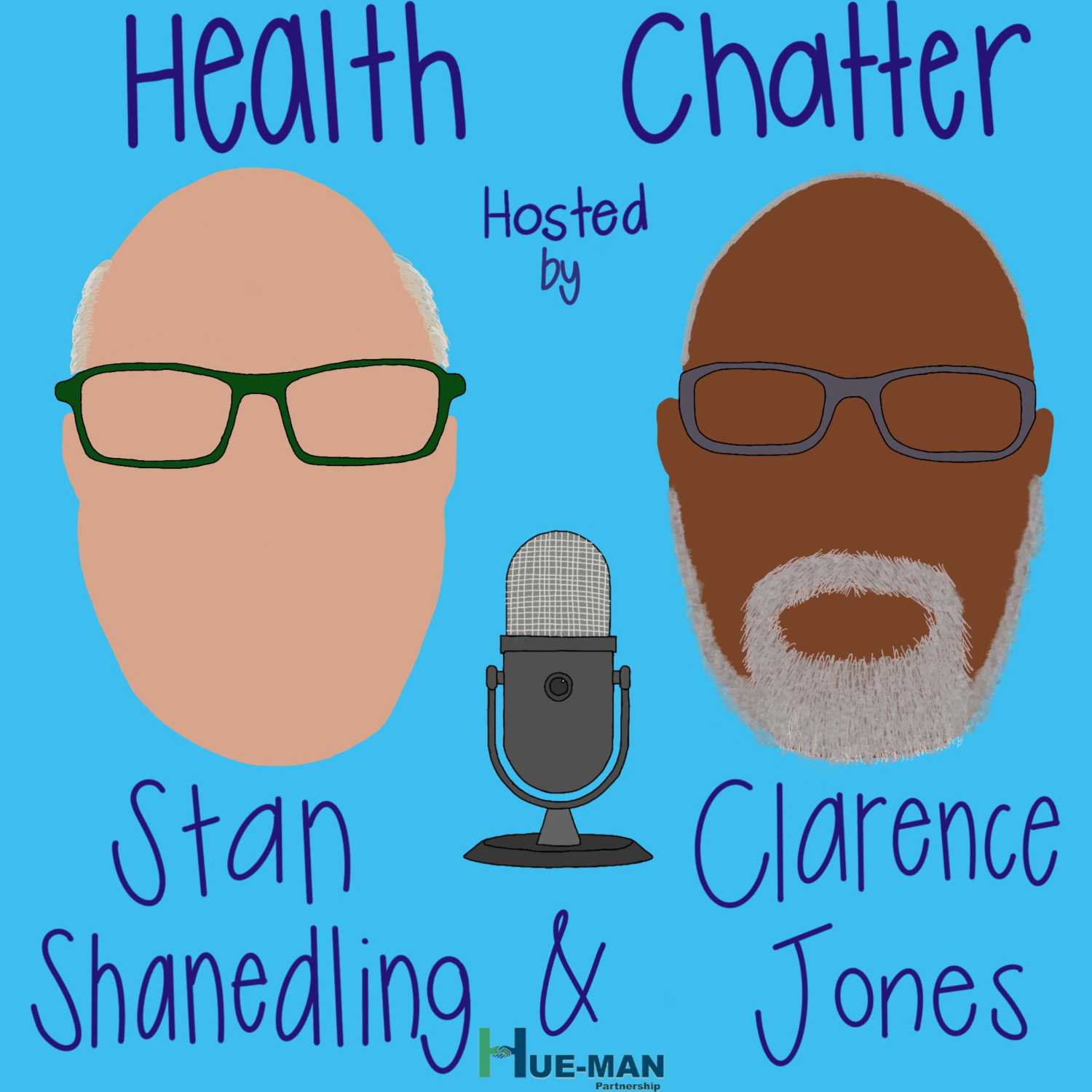Epidemiology & Measurement

Stan and Clarence chat with Jon Roesler about epidemiology and health measurement.
Jon currently serves as Assistant Professor and Program Director of Public Health Programs at Saint Mary's University of Minnesota. Before this role, Jon served as an epidemiologist and supervisor at the Minnesota Department of Health. While his experiences are largely centered on epidemiologic investigations of injury and violence, Jon has also worked on various other public health topics including diabetes, heart disease, oral health, fetal alcohol spectrum disorder, excessive alcohol use, and occupational health. Jon brings a wide breadth of knowledge to this episode.
Listen along as Health Chatter explores the role of epidemiology in creating a healthier society.
Join the conversation at healthchatterpodcast.com
Brought to you in support of Hue-MAN, who is Creating Healthy Communities through Innovative Partnerships.More about their work can be found at http://huemanpartnership.org/
Research
- Epi in the past
- Historically what did we use epi for?
- Epidemiology in the past was concerned essentially by the study of infectious diseases which were the cause of huge mortalities especially since urbanisation was initiated. Kesteloot.
- “Gradually epidemiology evolved as the study of the causes, the distribution, the risk factors and the prevention of chronic diseases, but also including accidents, suicide, depression a.o., diseases with a mass occurrence at the population level.” Kesteloot.
- CDC
- Mid to late 1800s– disease occurrence
- Acute infectious disease
- 1930s-1940s– extended to non infectious diseases
- 1980s– extended to the studies of injuries and violence.
- 1990s– the related fields of molecular and genetic epidemiology (expansion of epidemiology to look at specific pathways, molecules and genes that influence risk of developing disease
- Beginning of 1990s and accelerating after the terrorist attacks of September 11, 2001, epidemiologists have had to consider not only natural transmission of infectious organisms but also deliberate spread through biologic warfare and bioterrorism
- Cholera and epi/ Broad street pump
- Fast forward, what is it today?
- Uses of Epidemiology CDC
- Public health officials responsible for policy development, implementation, and evaluation use epidemiologic information as a factual framework for decision making. To assess the health of a population or community, relevant sources of data must be identified and analyzed by person, place, and time (descriptive epidemiology).
- What are the actual and potential health problems in the community?
- Where are they occurring?
- Which populations are at increased risk?
- Which problems have declined over time?
- Which ones are increasing or have the potential to increase?
- How do these patterns relate to the level and distribution of public health services available?
- How are epi linked with decreasing disease
- When investigating a disease outbreak, epidemiologists rely on health-care providers and laboratorians to establish the proper diagnosis of individual patients. But epidemiologists also contribute to physicians’ understanding of the clinical picture and natural history of disease.
- Much epidemiologic research is devoted to searching for causal factors that influence one’s risk of disease. Ideally, the goal is to identify a cause so that appropriate public health action might be taken. One can argue that epidemiology can never prove a causal relationship between an exposure and a disease, since much of epidemiology is based on ecologic reasoning.
- Where are epidemiologists today? US BLS.
- Epidemiologists work in offices and laboratories, usually at health departments for state and local governments, in hospitals, and at colleges and universities.
- Employment of epidemiologists is projected to grow 26 percent from 2021 to 2031, much faster than the average for all occupations.
- About 800 openings for epidemiologists are projected each year, on average, over the decade. Many of those openings are expected to result from the need to replace workers who transfer to different occupations or exit the labor force, such as to retire.
- Epi in the future?
- “Epidemiology has undergone considerable change over the past century, but what has not changed are the important public health questions that we address, from outbreak investigations to descriptive epidemiology; from causal questions to questions regarding intervention effectiveness, implementation, scale-up and sustainability.” OXFORD University Press
- “They’re currently the most crucial people for the safety of 21st-century society. Their research worldwide has produced the first vaccines for COVID-19 and has given people hope that things might return to some semblance of normal in the near future. Additionally, their work will safeguard the future against further catastrophe. Epidemiology is, therefore, an honorable and much-needed career, and students should be proud to pursue it.” Healthcare Management Degree
- In the coming years, themes such as sharing of resources, data, and metadata; evaluation of new methods and technologies to measure exposures, susceptibility and outcomes; and identification of new ways to collect personal and macro-level data are all crucial to advancing the field of epidemiology. Shared resources such as whole-genome sequencing of study participants will help epidemiologic studies across age and disease spectra. Coordination will be needed among multiple agencies to implement the transformation of epidemiology. CDC
- Do epi have any say on what to do?
- Epidemiologists do the research and provide recommendations, they do not get to make the decisions, only influence those making them.
- They also think critically to determine the best course of action based on their epidemiological findings and identify the most effective ways to communicate their findings to public health officials and ensure they base their decisions on reliable data. Epidemiologists also regularly make quick decisions to address public health crises, using their critical thinking skills to find suitable solutions under pressure
- But someone else (policy makers and elected officials) are usually making the call… we saw this in COVID19



